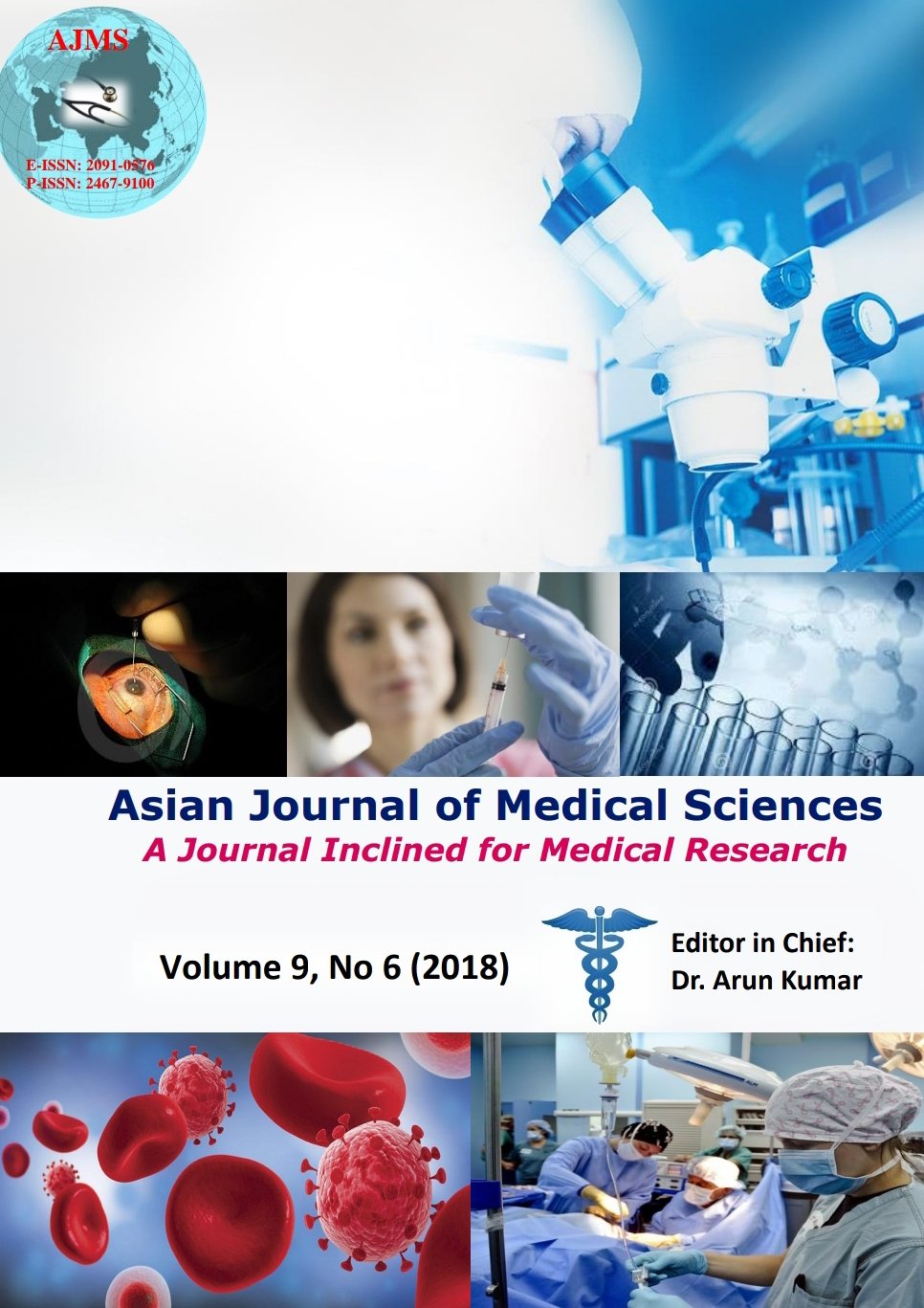Outcome of probing and syringing in congenital nasolacrimal duct obstruction at various age groups in a tertiary eye center in Western Nepal
Keywords:
Congenital nasolacrimal duct obstruction, Probing and syringing, Age groupAbstract
Background: Congenital nasolacrimal duct obstruction (CNLDO) is one of the commonest problems encountered in daily ophthalmology practice. Though probing and syringing is the mainstay of management of CNLDO, there is no clear guideline about the optimal time to perform.
Aims and Objective: To evaluate the efficacy of probing and syringing in cases of congenital nasolacrimal duct obstruction in various age groups.
Materials and Methods: In this prospective, hospital based, interventional, cross-sectional study done over a period of 2 years (July 2015- June 2017), children of various age ranging from 10 days to 8 years who underwent probing and syringing under general anesthesia for CNLDO refractory to conservative measures were included.
Results: Children of as young as 10 days to as older as 8 years underwent probing and syringing with male to female ratio of 1.2:1. Overall success was 80.6% (58/72) which was statistically significant when analyzed with age (P = 0.006). Majority of cases with successful outcome were below 24 months of age (90.62%). There was predominance of membranous obstruction (128/194) over bony obstruction (66/194).
Conclusions: Nasolacrimal duct probing under GA is a safe and viable option as a primary treatment modality for CNLDO. Though the success of probing is high in the younger children, it’s worthwhile to consider the same in older children at least up to 5 years of age before going for more invasive procedure like DCR surgery since more than 2 third of probing has successful outcome up to that age.
Asian Journal of Medical Sciences Vol.9(6) 2018 57-61
Downloads
Downloads
Additional Files
Published
How to Cite
Issue
Section
License
Authors who publish with this journal agree to the following terms:
- The journal holds copyright and publishes the work under a Creative Commons CC-BY-NC license that permits use, distribution and reprduction in any medium, provided the original work is properly cited and is not used for commercial purposes. The journal should be recognised as the original publisher of this work.
- Authors are able to enter into separate, additional contractual arrangements for the non-exclusive distribution of the journal's published version of the work (e.g., post it to an institutional repository or publish it in a book), with an acknowledgement of its initial publication in this journal.
- Authors are permitted and encouraged to post their work online (e.g., in institutional repositories or on their website) prior to and during the submission process, as it can lead to productive exchanges, as well as earlier and greater citation of published work (See The Effect of Open Access).




